It’s easy to get on a bike and start pedalling. While drivers have to pass a test to show they’re safe and competent, cyclists can just learn as they go along, rightly so, because they present less of a risk to other road users.
But there are some essential skills worth learning that will make you a safer, more efficient cyclist. They should make your rides faster and more enjoyable too.
If you need more advice, you can also read our essential cycling skills for beginners, which covers basic maintenance and setup, as well as offering some drills to perfect your skills.
Read on for our guide to 17 essential skills for road cyclists to master.
Reading the road

One of the most basic skills to master is reading the road ahead. This will help you ride more efficiently without wasting energy and also avoid risks.
A dip in a straight road? Maintain speed on the descent and you’ll have enough momentum to carry you some way up the other side before you need to put in too much pedalling effort.
A junction onto a more major road? Ease off in advance, to conserve energy and avoid having to brake hard at the last moment. The same applies to traffic lights, where a controlled approach may help you avoid having to stop and put a foot down.
Likewise, corners and descents – both covered in more detail below – will be taken more safely if you go into them at a manageable speed. Unless you’re in a race, no-one’s going to reward you for riding on the edge.
Obstacle avoidance

Avoiding obstacles, or managing your way through them, is part of the game.
Look out for potholes and, if you need to, move out smoothly in advance, rather than suddenly veering around them, particularly on busier roads. You may need to signal your intentions to drivers too, to give yourself room.
Riding through potholes is dangerous, because you can lose your balance and crash, cause a puncture or damage your rims or bike – or all three. Riding towards the verge risks getting caught in debris, so take a commanding position towards the centre of the lane.
Also avoid deep cracks in tarmac that run in your direction of travel, because these can trap a narrower tyre and cause you to lose your balance.
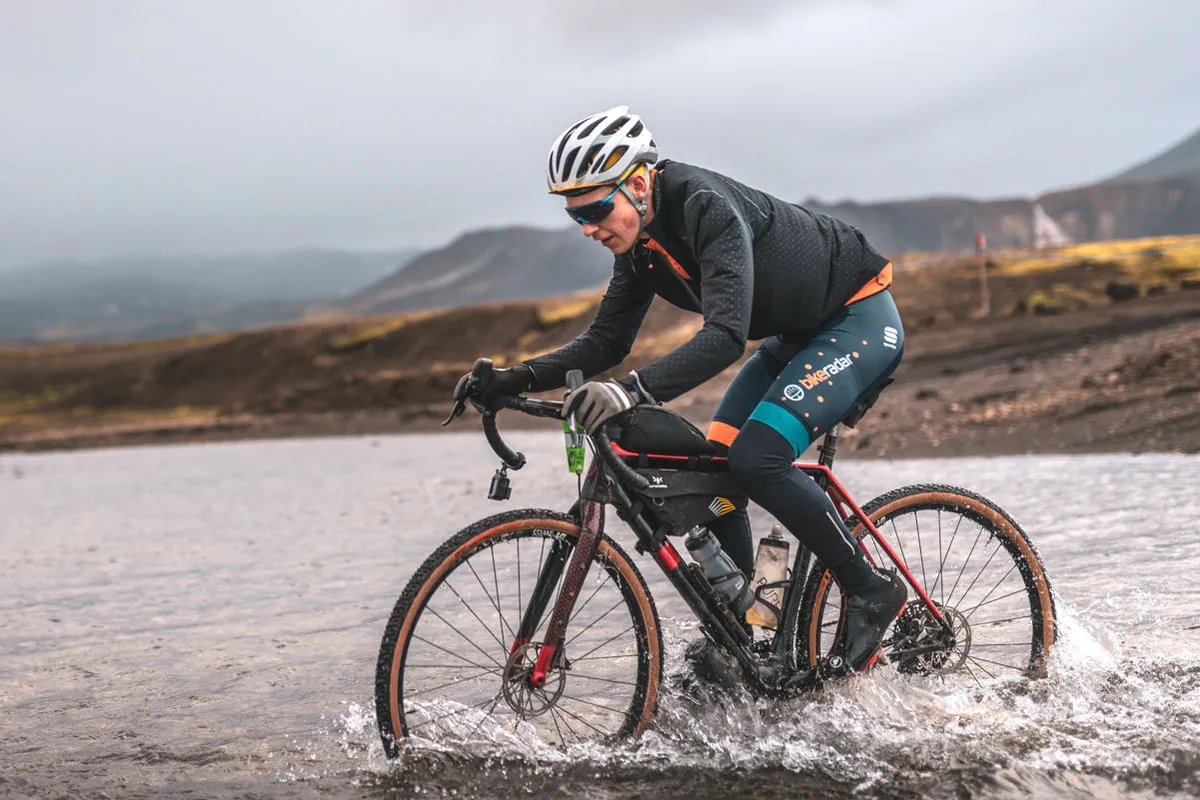
Avoid puddles too. At the least, you’ll be riding home with a wet bum.
But puddles often hide those pesky potholes or slippery mud, both of which you want to avoid.
Repeated exposure to deep water can penetrate your axles and bottom bracket, potentially damaging bearings, and may wash the lube off your chain.
Try not to ride over ironware or turn on it, particularly when it’s wet, because it can be slippery.
Tram lines and train lines should be crossed at as close to a right angle as possible, to avoid your wheel slipping or getting trapped. Even white lines and fallen leaves on the road can be slippery in the rain.
If you want to get flashy, it’s handy to be able to bunny hop a pothole, speed bump or other obstacle.
Reading other road users
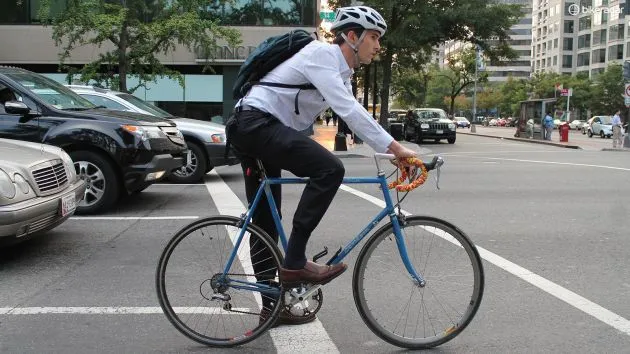
It’s also important to keep an eye out for drivers, who may do something unexpected. They may turn across your path and one of the most annoying pieces of bad driving is when drivers overtake, then cut in or have to slow down because they haven’t looked ahead to the next obstacle.
You can usually hear a driver who’s not slowing down as they come up behind you, despite traffic in the other direction, and anticipate a close pass.
It can be just as difficult to read some cyclists. It’s not uncommon for riders to suddenly veer across the road to make an unsignalled right turn (in the UK) as you’re about to pass. Calling out “on your right” as you approach can help deter them.
Hand signals

Which brings us onto hand signals. Make them, so other road users know what you’re intending to do. If you’re new to cycling, practise putting out your left and right hands while still riding in a straight line, which can be tricky.
Signal well in advance of a turn, because you probably need to have your hands on the bar through the turn itself to control your direction and speed.
Make sure your hand signals are obvious by fully extending your arm. You can start off by putting your arm straight up in the air, then moving it in an arc to the horizontal, which is a good way to draw attention to your planned move.
Looking behind you
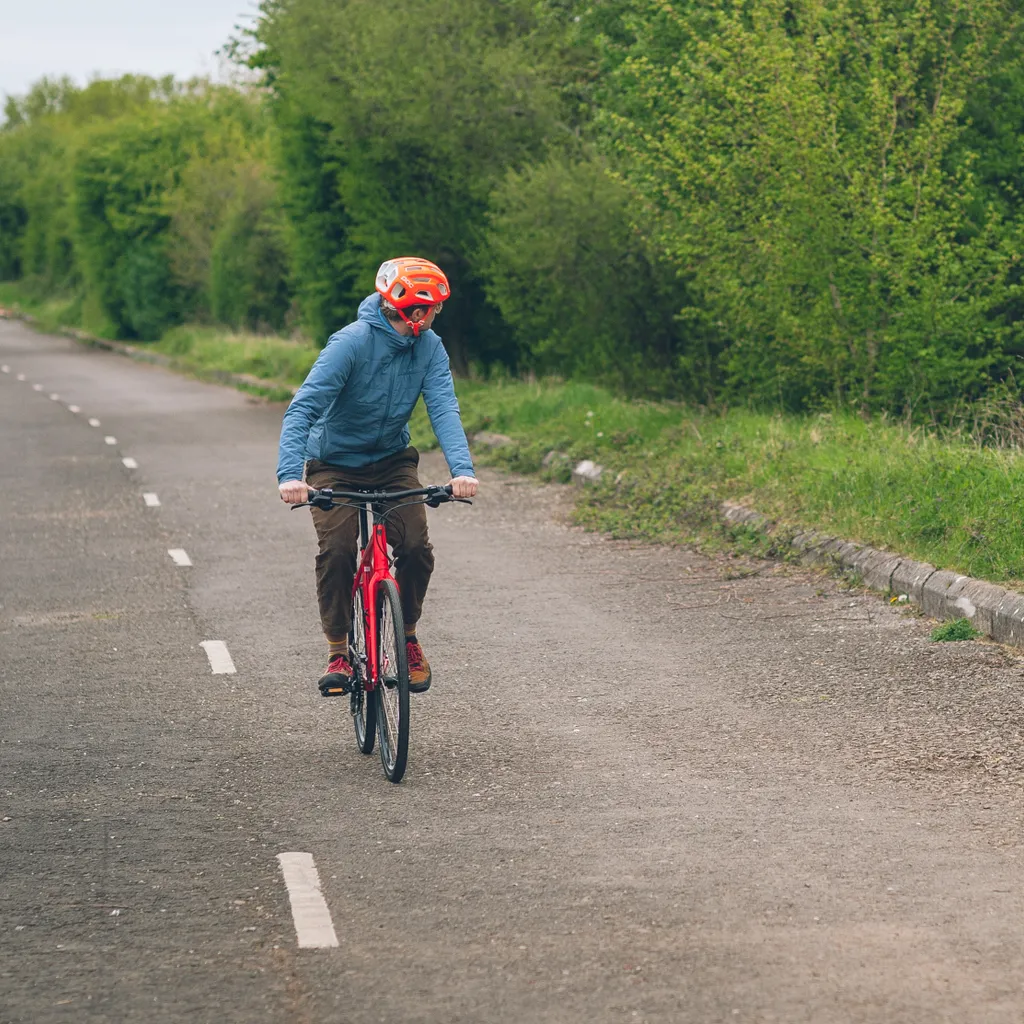
Turning your head tends to be easier if you’re more upright on your bike, but for drop-bar riders, it’s important to be able to do this in a more hunched position. It can be easier to move your head down and to the side, rather than trying to look up and over your shoulder. You need to be able to look behind without deviating too far from your line.
Practise looking over both shoulders – you’ll generally find your neck is more flexible in one direction based on which side of the road you ride on.
If you’re making a right turn (in the UK), you need to be able to look behind you while signalling.
Riding slowly
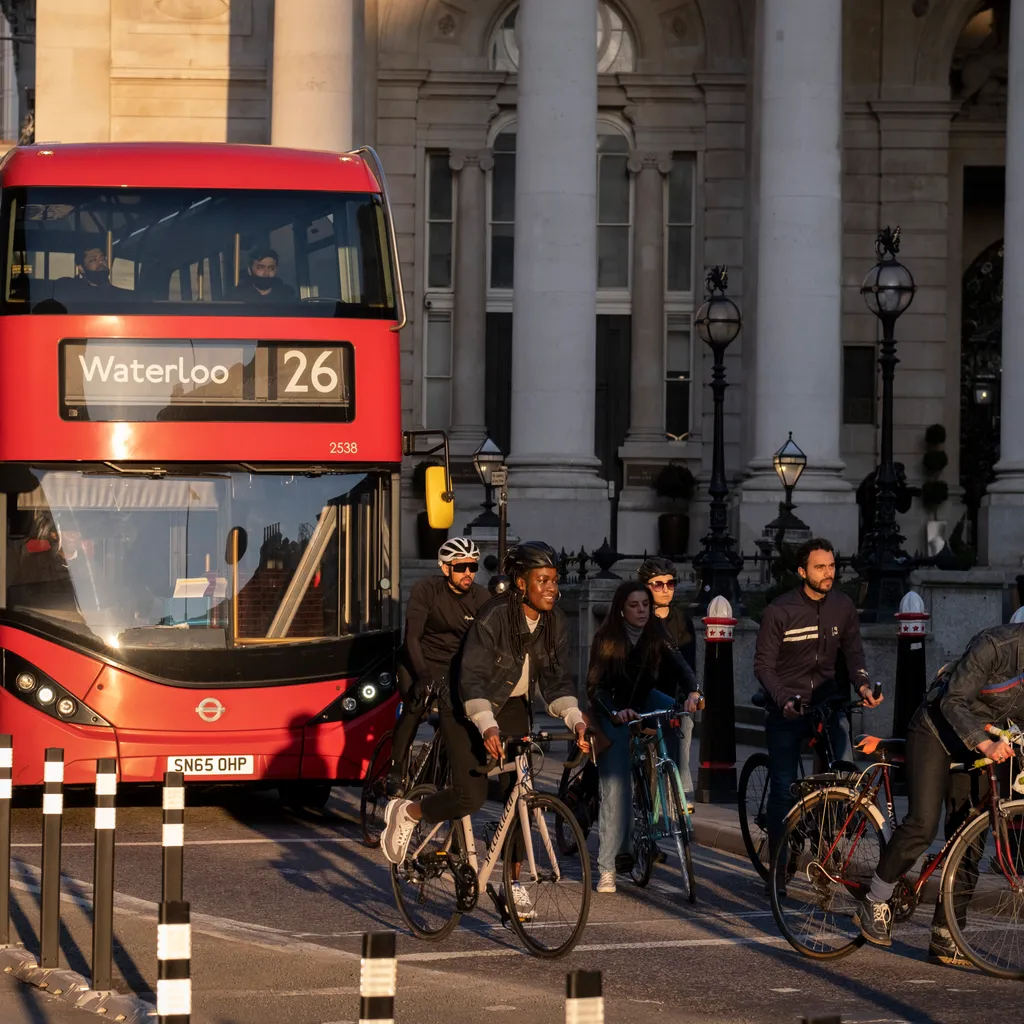
When you’re riding faster, your bike will be more stable. It’s trickier to keep your balance when moving more slowly. This is a skill worth working on, so you can keep moving in a straight line. The ultimate is mastering the track stand.
Riding slowly will help when you’re approaching traffic lights or other hold-ups – see reading the road, above.
Drinking while riding
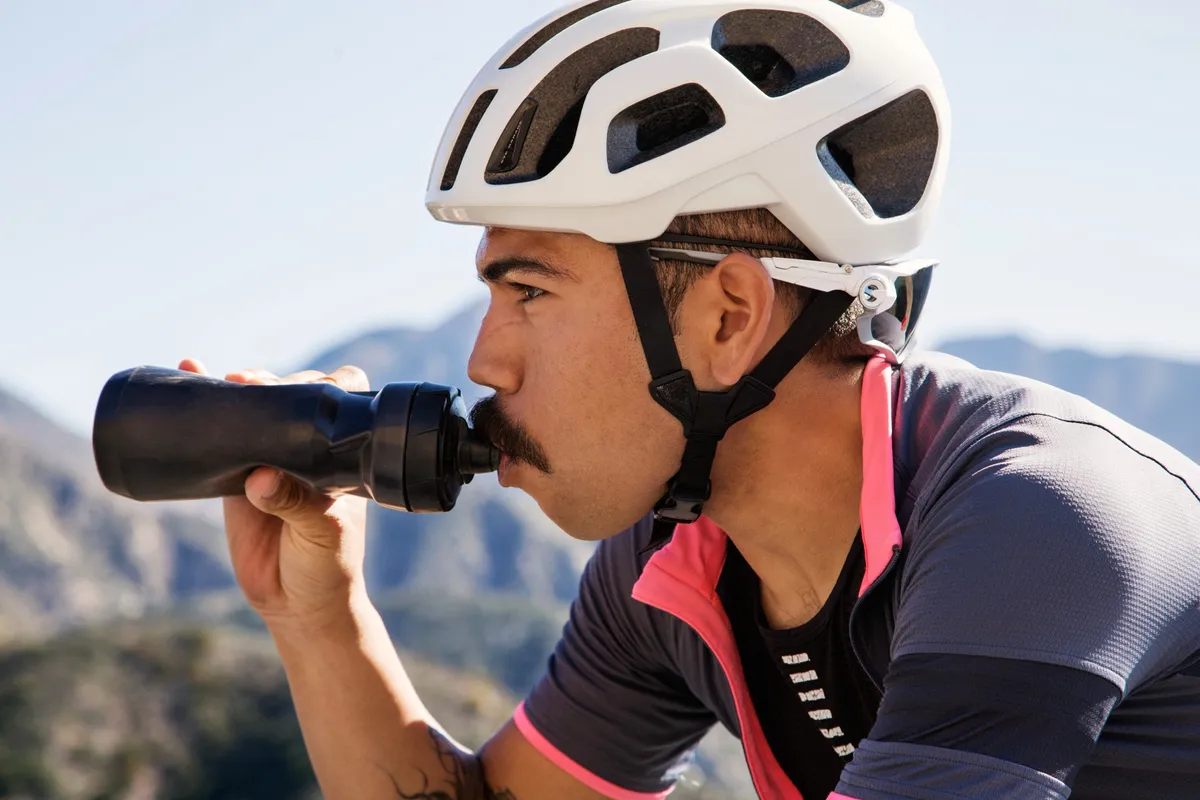
Being able to drink safely while riding, without wobbling or changing your line, will enable you to keep your hydration and energy levels topped up.
You ideally need to be able to take a bottle out of its cage and replace it without needing to look down, so you can keep your eyes on the road ahead. If you’re unsure, practise somewhere safe where there’s no other traffic around. Over time, you’ll get used to where your bottles and cages are, so you’ll have less need to look down.
Eating while riding
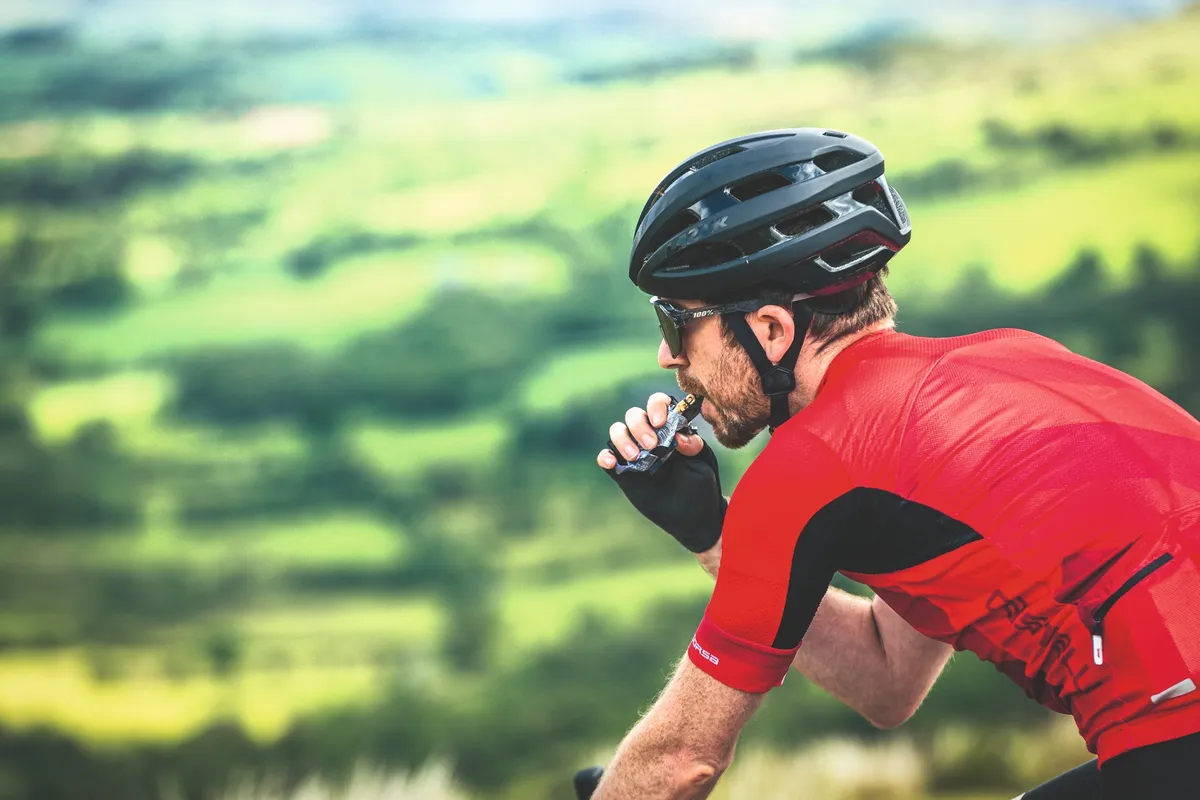
Eating while riding usually requires reaching into a back pocket, finding your most tasty treat and unwrapping it, or ripping the tab off an energy gel.
You can do this with your teeth, and that might be the best approach, but using two hands can be easier. Some energy bars will pop their wrapper open if you squeeze the far end, but others require more manipulation to rip open the packaging. Try to avoid being left with bits of loose plastic and discarding them on the road – nobody likes a litterbug.
Riding no hands
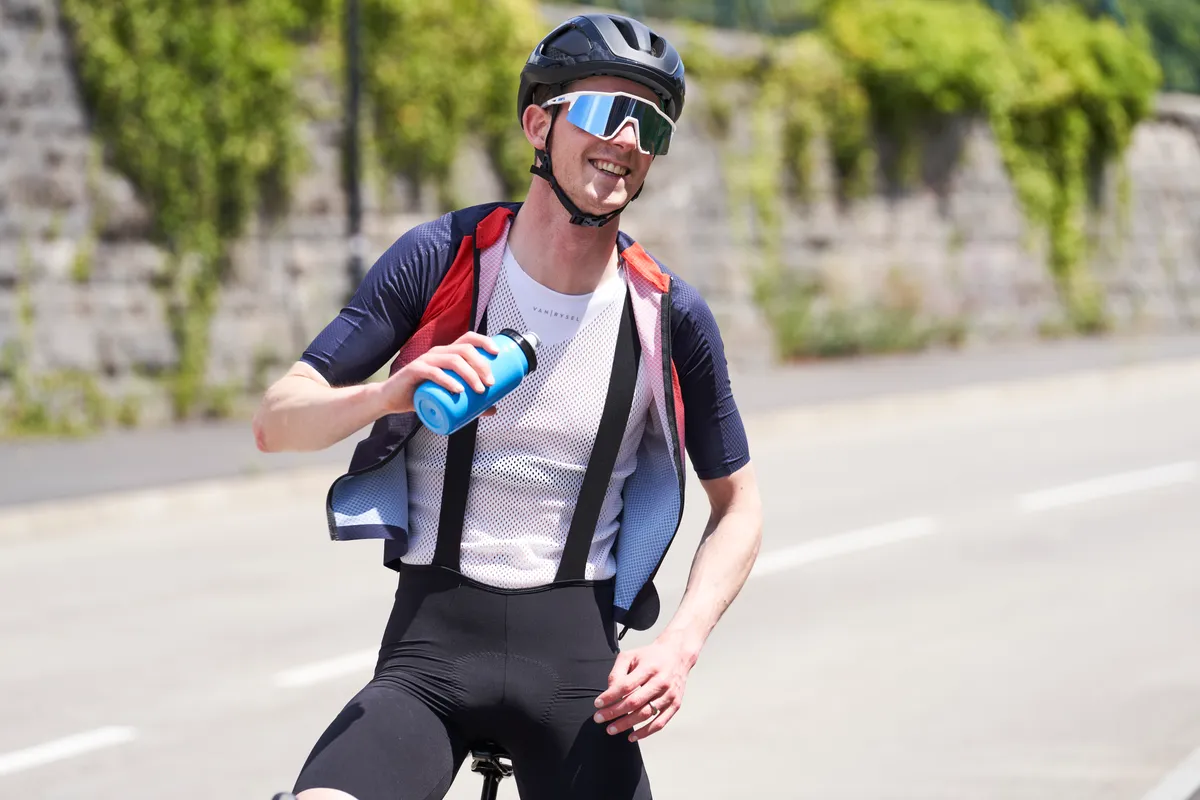
Being able to keep your balance while riding with your hands off the bar is a useful skill, which will enable you to perform no end of activities while still keeping moving. It’s handy for unwrapping a pesky energy bar, but also for adding and removing clothing and general reorganisation of your back pockets.
Drafting
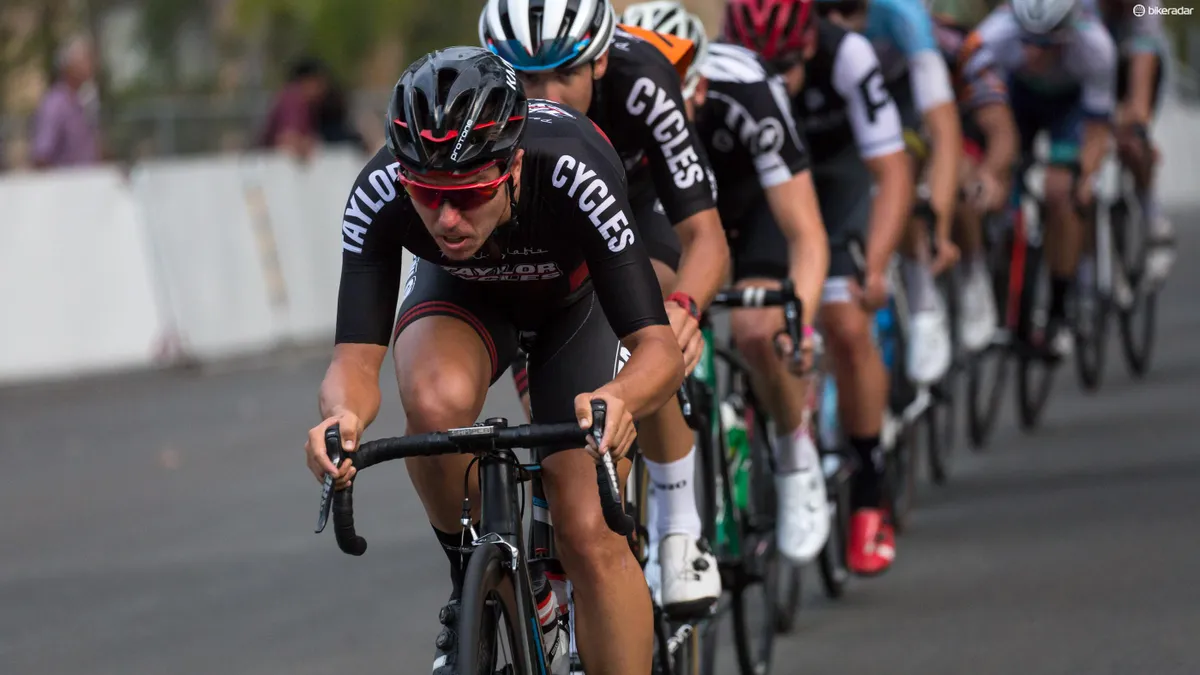
If you can draft effectively, you’ll save a lot of energy. It’s fundamental to racing, but will serve you well even if you’re riding with one other rider. It’s reckoned drafting can save you up to 40 per cent of your effort and sharing the load will enable you both to ride further and faster, or a weaker rider to keep up with a stronger one.
The closer to the rider ahead you are, the more energy you’ll save, but it takes skill and confidence to ride close to a rear wheel. It’s been shown that there’s also a benefit to the rider in front, so you can use that as a retort if you’re accused of being a wheel-sucker.
If your front wheel overlaps their rear wheel, this is a no-no however, because if they move off their line, you risk a touch of wheels and bringing you both down.
You can also get a free ride from drafting a car or other vehicle, but be aware they can usually stop faster than you and you may not spot a pothole ahead.
Riding in a group
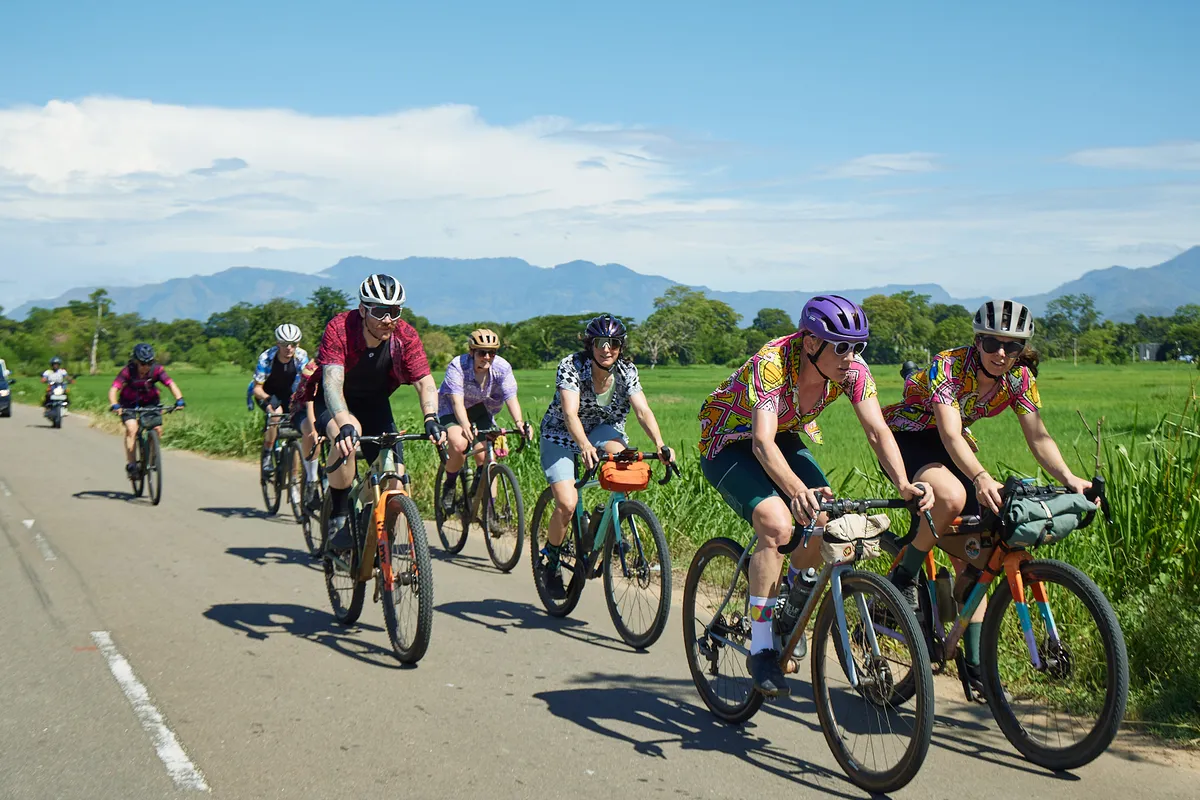
Riding in a group is drafting writ large and requires many of the skills described above. You need to be confident in your bike handling, able to read the road ahead and to spot obstacles quickly, while avoiding wheel overlap.
If you find yourself riding on the front of the group, it’s also important to keep an even pace, so riders behind you don’t risk crashing into each other as they’re forced to accelerate and decelerate.
There’s more etiquette to group riding too. It’s customary to point out obstacles in the road, such as potholes, by pointing to them and shouting out, so riders behind have a chance to avoid them.
On narrower roads, the rider at the front will usually shout “car up” when there’s a car approaching and the rearmost rider will shout “car back” if there’s one looking to overtake. At junctions, the front rider will shout “clear” if it’s safe to make a turn, so riders behind don’t need to come to a halt.
Read our post on how to ride in a group for more detail and more advanced group-riding techniques.
Climbing
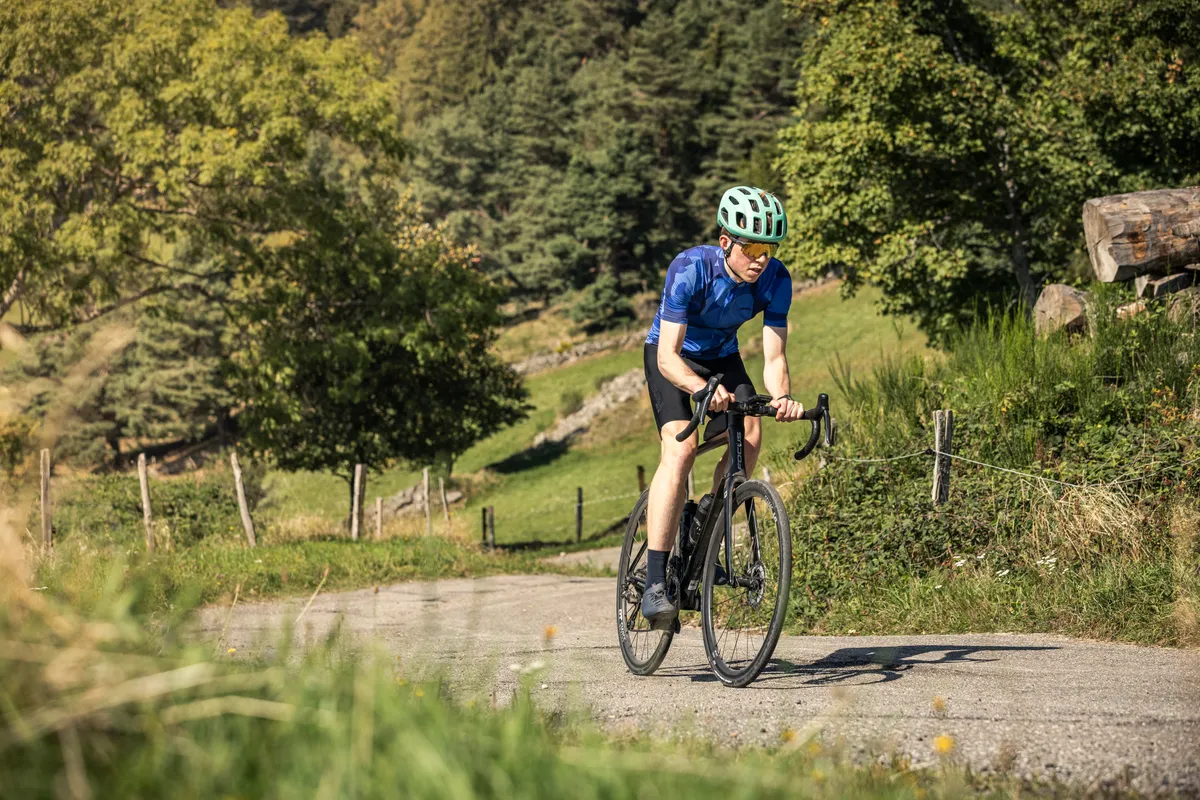
Key to climbing is pacing. While you might be able to power up a short, steep climb, a long climb will require a steadier effort to ensure you don’t blow up before you reach the top. You need to train differently to be effective at each.
You also need the right gearing to tackle the climb efficiently – that’s helped by the increased range of modern road bike groupsets.
Read our post on how to climb hills faster for much more, with 10 tips and two exercises to make you a climbing star.
Descending

Descending safely requires combining several of the skills above, such as reading the road ahead, being aware of other road users and avoiding obstacles.
You also need to be comfortable and relaxed riding in the drops, and confident in your ability to brake effectively and take corners safely. Don’t drag your brakes to avoid them overheating, and be especially careful on wet roads.
Read our post on how to descend safely for more hints and tips.
Cornering
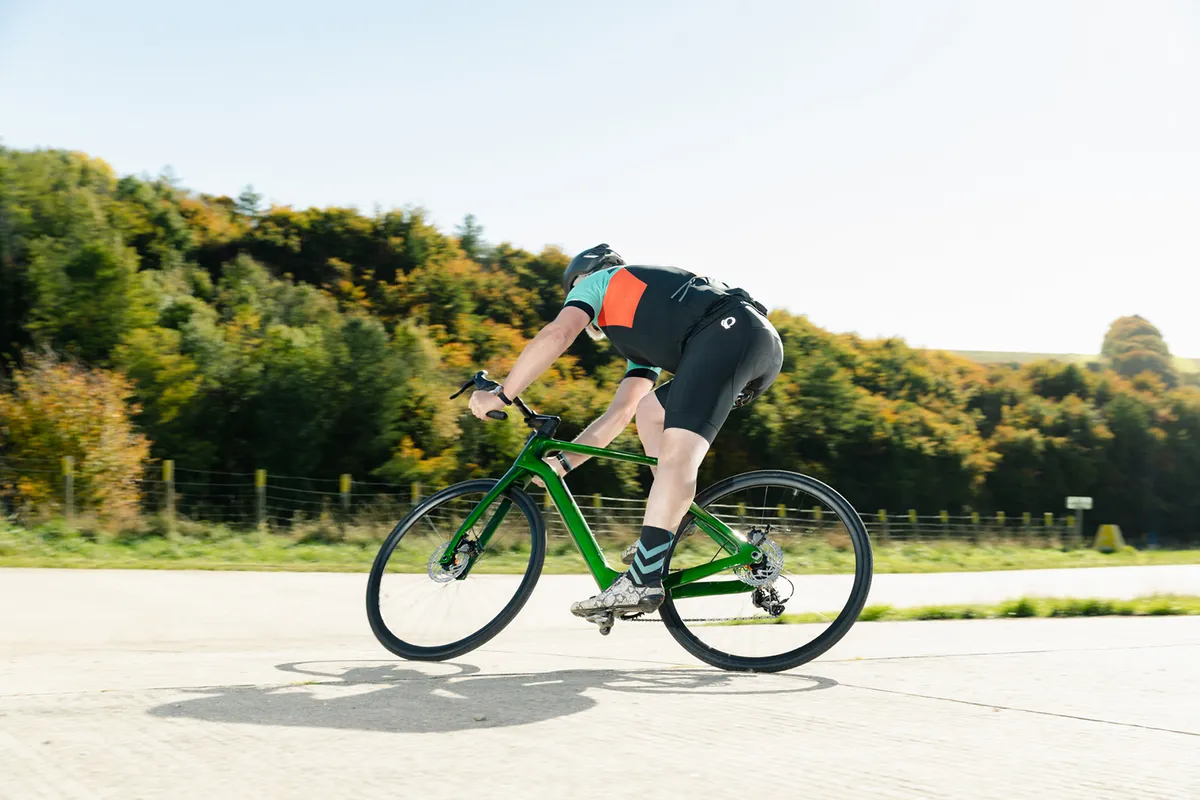
Another aspect of reading the road is the ability to keep up pace when cornering. Scrub too much speed and you’ll have to put effort into accelerating, but hold too much speed and you risk crashing or ending on the opposite side of the road.
It’s important to control your speed before you start to corner, then ride smoothly or freewheel through it, before accelerating out of it. You should keep your weight on the outside pedal and keep the inside pedal up to avoid the risk of grounding a pedal in a tight or fast corner.
You also need to understand your tyres’ level of grip and how it varies with the conditions and your line through the corner.
We’ve got a step-by-step guide to how to corner with confidence. Our post on how to master fast cornering suggests drills to practise to improve your cornering.
Braking
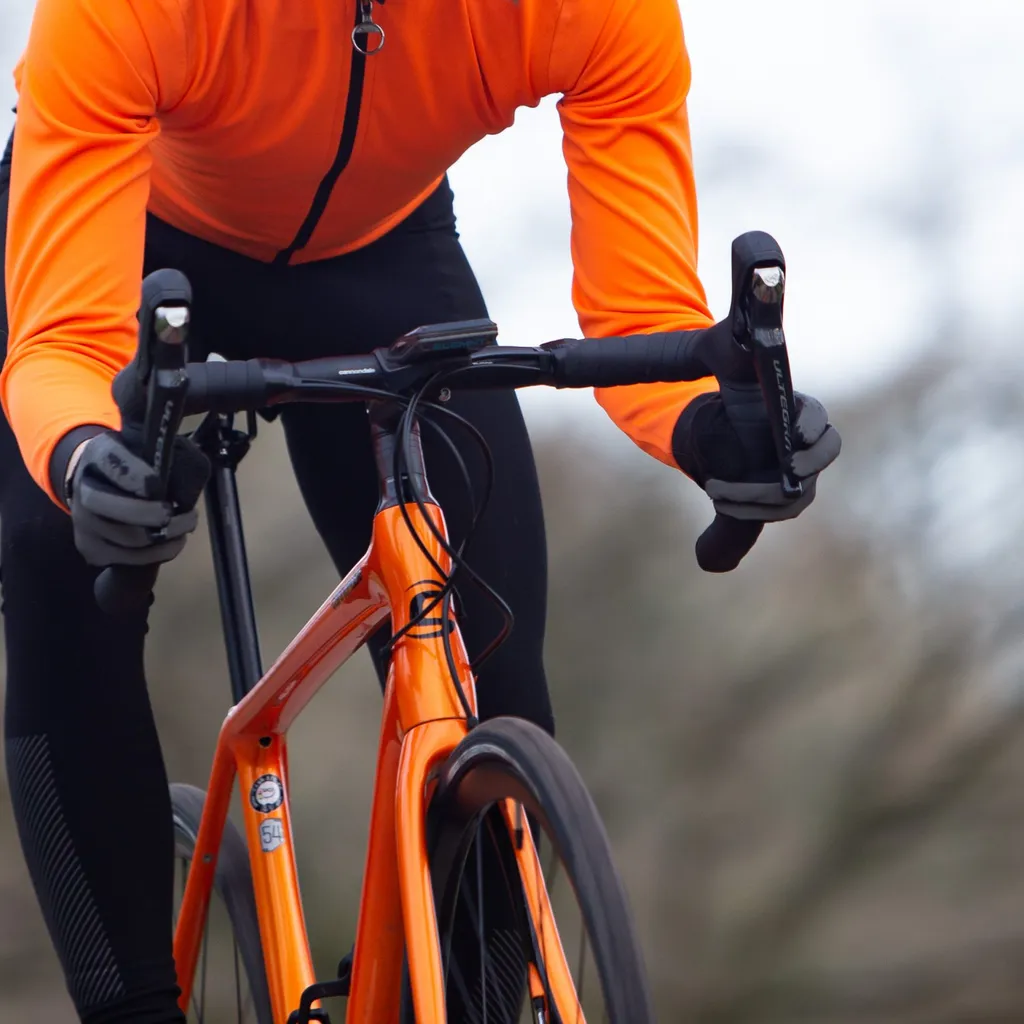
Braking efficiently is part and parcel of cornering effectively, but also important in a straight line. We’ve got a masterclass on how to brake like a pro to help.
The balance between front and rear braking needs to change dependent on the conditions. In the dry, you can use your front brake more, while wet surfaces require more even distribution between front and rear brakes.
Your position on the bike is also important. Try to shift your weight further back to increase rear-wheel traction.
Correcting a skid
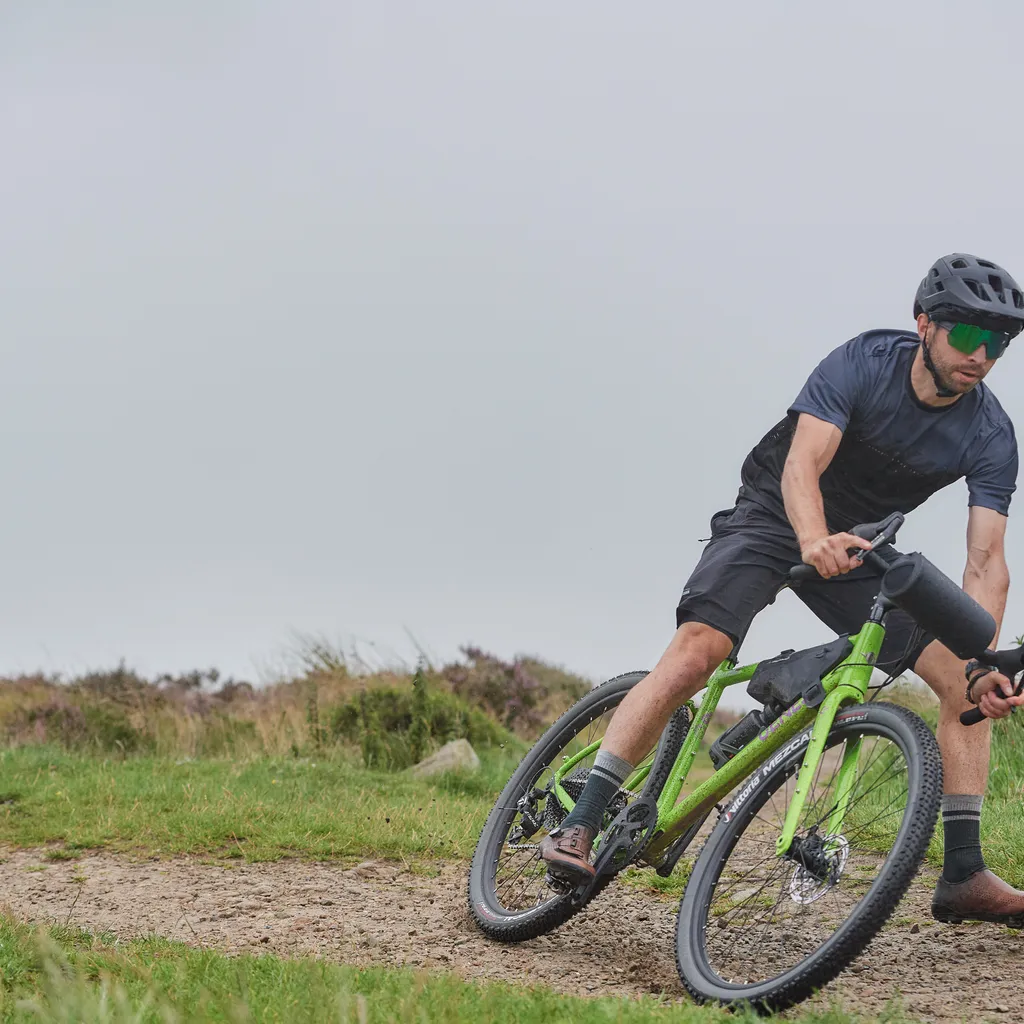
Sooner or later, you’ll experience a slipping wheel, often when braking and turning on damp roads. It’s usually your rear wheel that will slide out first and this is easier to correct than a front-wheel skid.
With practice, you should be able to use your legs to pull your rear wheel back under you before you lose control. With further practice, this will likely become an automatic reaction that you don’t need to think about.
Using clipless pedals
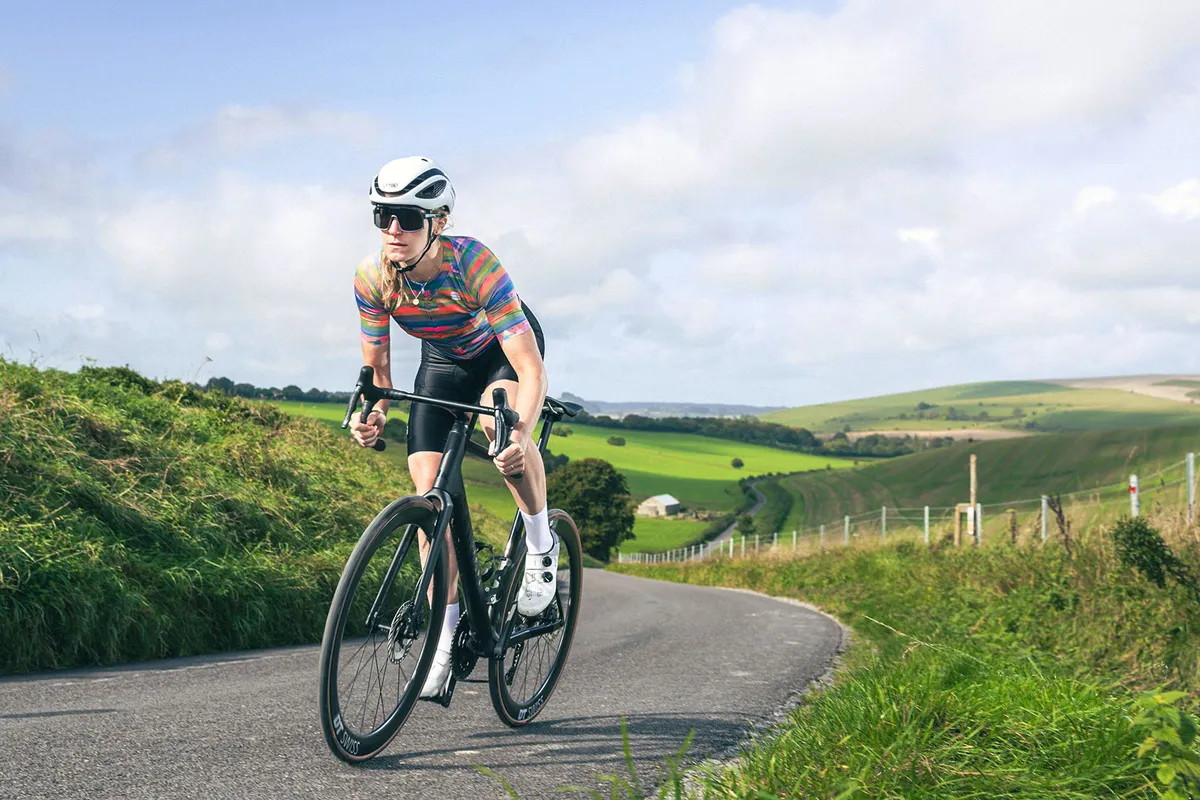
Finally, many riders prefer to use clipless pedals to flats. There’s a whole skill to clipping in and out effectively, particularly with single-sided road-going pedals.
As with reaching for a bottle, muscle memory will kick in with practice, but it’s something to try somewhere safe, where if you fall off it won’t be too uncomfortable. A narrow tarmac path with grass on either side is a good choice. Read our post on how to ride with clipless pedals for more on cleat and pedal types and how to get started.
